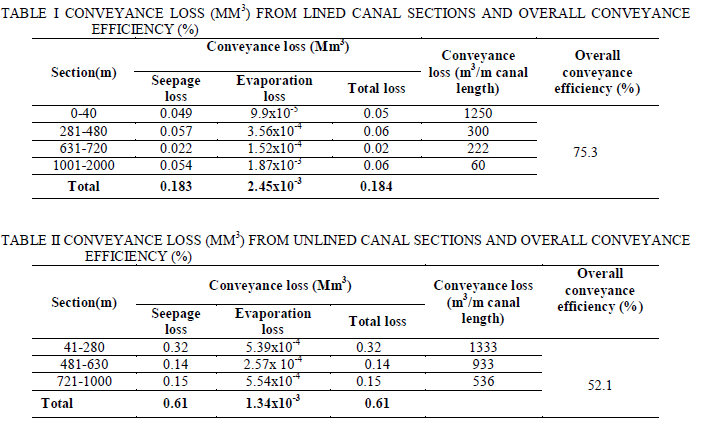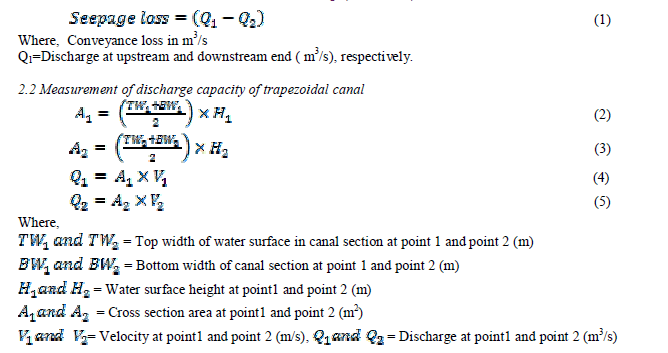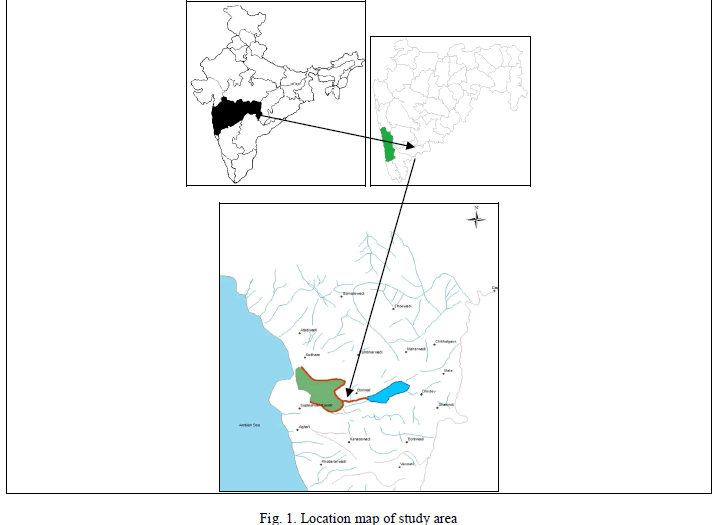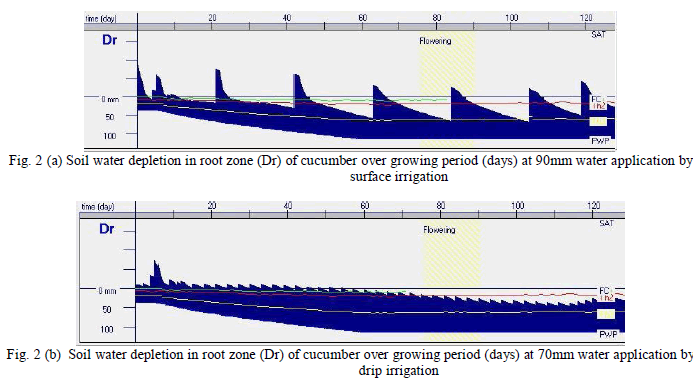ISSN ONLINE(2319-8753)PRINT(2347-6710)
ISSN ONLINE(2319-8753)PRINT(2347-6710)
| Sangita P. Lajurkar 1, Shantanu R. Khandeshwar 2, Rajesh M. Dhoble3, Rashmi G. Bade4 Asst. Prof., Department of Civil Engineering, P. I. G. College of Engineering, Nagpur, Maharashtra, India1 Associate Prof., Department of Civil Engineering, Y. C. College of Engineering, Nagpur, Maharashtra, India2 Asst. Prof., Department of Civil Engineering, P. I. G. College of Engineering, Nagpur, Maharashtra, India3 Asst. Prof., Department of Civil Engineering, Anjuman College of Engineering, Nagpur, Maharashtra, India4 |
| Related article at Pubmed, Scholar Google |
Visit for more related articles at International Journal of Innovative Research in Science, Engineering and Technology
An expansive soil shows high volumetric changes with changes in water content. When they imbibe water during monsoon, they expand and on evaporation thereof in summer, they shrink. Because of this alternate swelling and shrinkage, structures fonded on them are severally damaged. Extensive research work has been done on expansive soil but an important aspect of the expansive soil mass is the volume reduction or shrinkage exhibited on drying is appears to be inadequately investigated in the available literature. This paper includes the study of shrinkage behaviour or the rate at which volume decrease takes place when a given soil at different initial water content shrink till it assume fully shrunken dry state and attempt is made to propose appropriate parameter characterizing shrinkability of soil on lines of the “Limiting Unit Swell Potential”. The aspects presented here above have important relevance in predicting cyclic volumetric change exhibited by any natural or manmade soil mass. Extensive laboratory investigations were carried out on five soil materials, at different initial water contents, possessing different swelling characteristics
Keywords |
| “Limiting Unit Swell Potential (Psu)0, Limiting Unit Shrink Potential (Spu)0, Specific Volume, Shrinkability, Swellability” |
INTRODUCTION |
| Expansive soil exhibits very complex and undesirable characteristics when used as engineering material. This soil is truly assumed the notoriety of being the most difficult and problematic soil for any civil engineering constructions because it shows high volumetric change due to change in water content. The technology associated with such deposit viz, the expansive soil technology has remained for long time an important domain of continued research and development. The main environmental cause of volume changes exhibited by fine grained soil (with appreciable percentage of montmorillonite type of clay particles) is the change in water content. On increasing the water content, fine grained soil swells and the decrease in water content causes shrinkage. The volume of soil at any stage of water content can better be represented by specific volume of soil mass having unit mass or weight of soil particle (1gm) at any stage of water content and thus the specific volume has unit like cubic cm per gram (cm3/gm). This is the most convenient parameter for characterizing the volume change for different water contents. For specifying more realistically the volume change characteristics during swelling the “Limiting Unit Swell Potential” parameter was proposed by Golait and Khanzode [1], Golait and Wakhare [2], and Golait, Wakhare, and, Malkhandale [3]. It essentially signifies the volumetric strain exhibited by soil due to unit percentage increase in water content. In this paper, a new parameter is tried to develop for characterizing shrinkability of soil on lines of the “Limiting Unit Swell Potential”. |
II. LABORTARY INVESTIGATIONS |
| The laboratory investigations were carried out on reconstituted five different expansive soil samples with different degree of swellability to study the shrinkage behavior of the soil with different physical states with respect to wetness or water content conditions. The shrink-swell behavior of the soil was studied by obtaining the volumetric increase and decrease of soil samples during swelling and shrinking. |
| A. Material used |
| ïÃâ÷ Black cotton soil:- The soil used for the investigations was collected from a black cotton soil deposit in Nagpur area. |
| ïÃâ÷ Bentonite:- Commercial bentonite available in the local market was used for mixing with native black cotton soil to enhance swelling characteristic. |
| ïÃâ÷ Gray clay: - Gray clay was used in preparation of soil samples of low expansivity. |
| B. Soil Mixes for Laboratory Investigation |
| In order to develop the parameter for characterizing shrinkability of soil with different swell-shrink capacity, the soil mixes of different swellability characteristics are considered with soil particles less than 75 micron size. In actual cases of natural soil the finer active fraction (F) may also possesses the swellability characteristics of different magnitude which depends on the type and amount of clay minerals, fineness of clay particle etc. In order to incorporate these varying swellability characteristics of finer fraction the various mixes of soils with different degree of swellability were used. It consisted of mixture of local black cotton soil passing through 75μ size sieve, commercial bentonite and gray clay. |
| Considering the varying degree of expansivity of finer fraction (F) various mixes were prepared by adding different percentage of bentonite and gray clay as shown in Table I. In this way finer fraction (F) material with 30% bentonite and 70% of 75μ black cotton soil fraction is considered as fine active fraction with largest swellability, where as finer fraction (F) containing 100%, 75 μ gray clay is considered to have least swellability. |
 |
| C. Sample Preparation |
| For preparation of soil mixes with different degree of swellability black cotton soil and gray clay was collected from a native site. Then it was kept for air drying for 24 hours. After 24 hours it was soaked with water to form slurry and the slurry was sieved through 75 μ after that the slurry passing through 75 μ was kept steady for 1 to 2 days in the tub and water from the tub was removed by siphoning. The wet soil was oven dried at 105°Cand then it was pulverized with help of mallet. The pulverized soil was then sieved through 1 mm sieve. The soils thus obtained were stored for further use. Commercial bentonite available in local market was used for preparing finer fraction (F) of largest degree of swellability. Individual soil mixes were prepared by considering weights of different material as indicated in Table I. On above mentioned five soil mixes volume change behaviour test (Shrinkage and swelling Test) were performed. |
| D. Procedure |
| Each soil mix was mixed with water to attain its water content at approximately 40-45 percent (midway between its plastic limit wP and liquid limit wL). Wet mass was kept in airtight plastic bag for minimum ten hours for uniform distribution of water. Wet soil mix was then pressed into fifteen PVC open ended tubes each of 4.5cm inside diameter and 9 cm height for getting identical wet cylindrical soil samples. All the samples were air dried in shade, making them upside down frequently. Drying of initially fully saturated plastic soil sample caused its gradual shrinking (without development of cracks within) and consequent reduction in its water content and the degree of saturation. In this way five samples of different degree of swellability with three different initial water contents were obtained by consequent air drying. On each sample swelling as well as shrinkage test was performed. Swelling test was performed on six gang consolidometer. For swelling test samples of five soil mixes were cut by consolidometer rings and they placed in six gang consolidometer apparatus for swelling. For shrinkage test manually prepared cutter of M. S. steel of volume 15.235 cm3 was used. Soil samples from five different soil mixes at different initial water content stage were cut by the cutter and they placed in oven for 24 hrs drying at 1100 temperature to obtained the full shrunken state and found out there volume by mercury displacement method at fully shrunken stage. |
III. PARAMETERS CALCULATED |
| From the investigation the following values for all soils are calculated |
| A. Initial water content (wi) |
| B. Initial dry unit weight (γd) |
| C. Initial specific volume (vi) |
| D. Water content on shrinkage limit (ws) |
| E. Water content on full swelling (wf) |
| F. Specific volume on full drying (vd) (cm3/gm) |
| G. Specific volume on full swelling (vf) (cm3/gm) |
| The evaluated values of “Limiting Unit Shrink Potential” are given in Table II. |
IV. CHARACTERISTICS OF VOLUME CHANGE ON SHRINKING |
| The samples of all soils at different initial water content were allowed to freely shrink till fully dry state. The volume change (reduction) of soil during this process is proposed to be characterized by a parameter with the similar logic as used in characterizing the volume change during swelling. Hence by applying the same logic used in defining “Limiting Unit Swell Potential” (Psu)0, a parameter termed as “Limiting Unit Shrink Potential” (Spu)0 can be expressed as volumetric strain (during shrinking) due to unit percent reduction in water content . Thus, |
 |
| It is to be noted that volume of any wet fine grained soil reduces up to only its shrinkage limit on reduction in water content. During further water content reduction below shrinkage limit the volume of the soil mass remains constant till it attains fully dry state at zero water content. Considering this fact the water content change from initial water content till water content nearer to shrinkage limit needs to be considered in evaluating (Spu)0. With this consideration, (Spu)0 can be expressed as, |
 |
| The data on specific volumes of soil at initial state and at fully shrunken dry state can be utilized to get the percent volumetric strain (during shrinking) as under |
 |
| Thus, the “Limiting Unit Shrink Potential” can be expressed as |
 |
| Limiting Unit Shrink Potential is discussed by Lajurkar and Bhagat [4]. The values of “Limiting Unit Shrink Potential” (Spu)0 so calculated for all the cases are shown in Table II. It is seen that these values in some cases appears to be inconsistent which might be due to some procedural errors in finding initial specific volume. For any soil the volume exhibited by the soil mass at various water contents within the whole range of perfectly dry solid states to liquid physical states is conceptually idealized by line ABCD as represented in Figure 1. B is visualized as a point pertaining to shrinkage limit. However the real soils actually may exhibit the volume vs water content relationship is shown by line AECD. On reduction in the water content from say liquid state to plastic state the volume reduces linearly till it enter the semisolid state and thereafter volume reduction my takes place at slower and slower rate and ultimately beyond certain small water content it may remain constant till soil attains perfectly dry state with zero water content. Thus there is a transition zone of water content pertaining to X and Y in the Figure 1. For obtaining the values of “Limiting Unit Shrink Potential” the water content change taken in computation is (wi-ws) for which the volume changes is (vi-vd), in other words it indicates the slope of the straight line from B to C. In reality this volume change is the volume change between C and E. Because of this fact the computed value may not represent the actual rate of shrinking which is almost linear within the range from N to C. The transition zone of water content as shown in Figure 1 is difficult to obtain. It may also be different for different soil. Therefore the computed (Spu)0 does not represent the shrinking rate over the whole range of water content from initial to shrinkage limit. The better criteria to understand the shrinkage behavior is to obtain the water content volume relationship by actually plotting the initial specific volume (vi) values at the three different water content states as obtained in the present investigation. |
 |
| The data obtained from swelling tests and shrinkage tests of some samples say A, B and D at different initial water contents is represented in Figures 2, 3 and 4. In these figures specific volume of soil at initial water content, at water content of fully swollen state and the specific volume at fully dry state are represented. The soil at particular initial water content was in one case allowed to swell freely and fully and in another case sample at the same initial water content was allowed to shrink till it attains fully dry state at zero water content. In these figures solid lines shows swelling of soil and dotted lines indicates the interpreted path during shrinking till dry states. It is apparent that when from the initial water content state soil attains fully dry state, the path to be indicated needs to take the transition zone of water content volume relationship as discussed in earlier Figure 1. This transition zone is surrounding the shrinkage limit of that soil. The specific volume-water content relationship as depicted in this figure reveals that the line during shrinking more or less follows the some trend as that for swelling up to water content little more than shrinkage limit below that water content the transition zone starts. In such a way that relationship assumes curvilinear nature ultimately attaining constant volume condition within a small percentage of water content say 0 to 5, 6 %. It can thus be interpreted from the obtained swell shrink behavior (w.r. to Figures 2, 3, 4.) that the volumetric strain during shrinking takes place at the same rate as that for swelling till soil shrinks to the water content little more than the shrinkage limit of that soil. The shrinkage limit of the swelling soil existing in nature have relatively small values of about say 10 to 13% which means up to the water content of about 13 to 16% shrinkage of the soil might takes place at the same rate with which the soil swells. Values of Unit Shrink Potential (Spu)0, Specific Volume calculated for all the samples are given in Table II. |
 |
 |
| In the field conditions expansive soil deposit whether it is exposed to climatic changes or be it a covered deposit under a structure, even in summer season the soil at various level below as never attains a fully dry states with water content of say zero to 10%. Most probably the shrinking is visualized to take place up to the water content definitely more than its shrinkage limit. With respect to these practical aspects, it can be reasonable to assume that the shrinking of the expansive soil under the natural environmental conditions will be taking place at the same rate at which soil swells. This behaviour which is distinctly observed from the present investigations (w. r. to Figure 2, 3, 4.) does substantiate the observed behavior of the expensive soil deposits. A completely exposed expansive soil deposit which is subjected to cycles of swelling and shrinking due to cyclic seasonal water content changes is never observed to show permanent upheaval or subsidence. |
V. CONCLUSION |
| Analysis of the results of laboratory investigations carried out on expansive soil led to the following conclusions: |
| 1. A newly proposed parameter „Limiting Unit Shrink PotentialâÃâ¬ÃŸ appropriately characterizes the shrinking behavior of expansive soil up to the transition zone. Beyond the transition zone better criteria to understand the shrinkage behavior is to obtain the water content volume relationship by actually plotting the vi values at the three different water content states as obtained in the present investigation. |
| 2. This “Unit Shrink Potential” has important relevance in predicting cyclic volumetric changes exhibited by any natural or manmade soil mass. |
| 3. The specific volume-water content relationship as depicted in Figure 2, 3, 4 reveals that the rate at which soil swell at any initial water content is more or less similar to the rate at which soil shrink up to the water content slightly more than its shrinkage limits. Below the shrinkage limit there is a transition zone in which reduction in water content does not cause volume decrease |
ACKNOWLEDGMENT |
| I express my gratitude and sincere thanks to respected Dr. Y. S. Golait Professor Emeritus, P. G. (Geotech. Engg.), Civil Engineering Department Shri Ramdeobaba Kamla Nehru Engineering College, Nagpur, |
References |
|